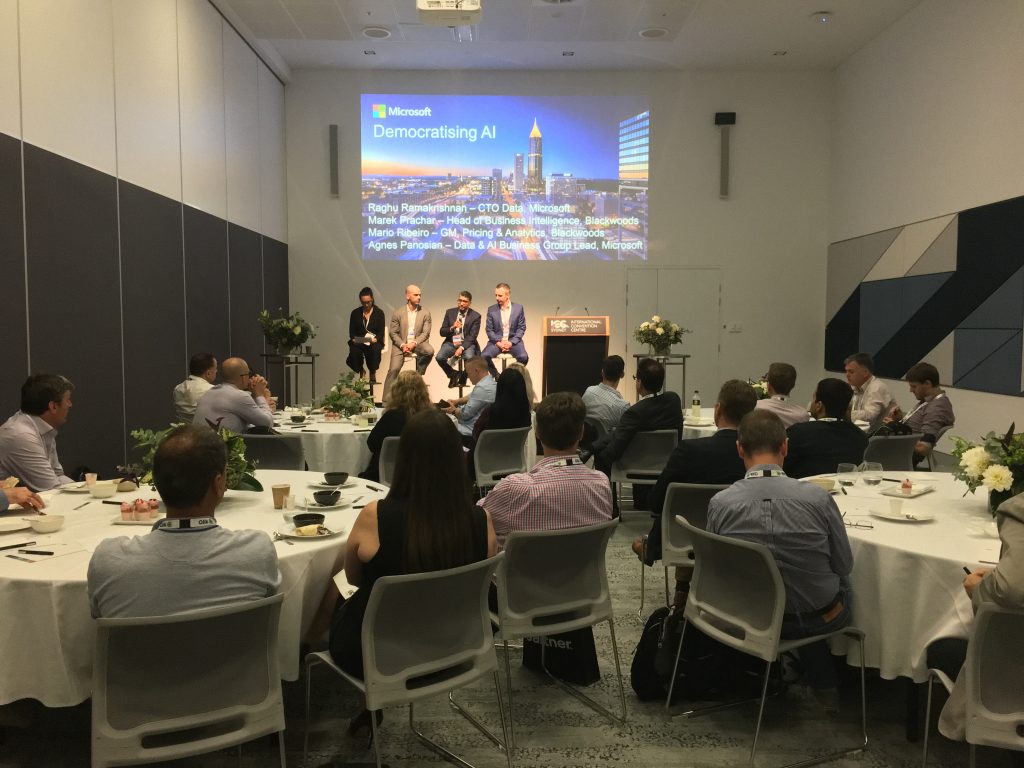
Data
With great data comes great opportunity; Microsoft rises to the challenge
Organisations that harness data, the cloud and artificial intelligence outperform those that don’t.
That was the clear message that Raghu Ramakrishnan, CTO for Data, Technical Fellow Microsoft, sounded during a keynote presentation at Gartner’s Data and Analytics Summit held in Sydney late February. 
Dr Ramakrishnan told delegates at the Summit that the world today is greatly enriched by data – data from video, audio, text, sensors. He said that the planet’s data collection is forecast to grow to 44 zettabytes by 2020.
But Dr Ramakrishnan also noted that with great data comes great opportunity and responsibility. “We need to be serious about the data – to invest in making sure it’s the right data, not noisy, erroneous or misleading. We need to make sure that data is properly secured and held private in trusted platforms. When it is accessed, that also needs to be properly authorised and auditable.
Finally, to unlock the value in the data we need intelligent tools that can democratise access to the insights that the data holds.
– Raghu Ramakrishnan
Each time consumers visit a website, buy something online, do their banking, each time a sensor takes a reading, or a camera captures an image, data is generated, he noted. “We are observable and observed – that’s what data is all about.”
“Compute power becomes a big piece of the puzzle, and that’s why the cloud its elastically scalable compute is so important. We harness compute to make sense of data, and to keep the data secure,” he said. The global footprint of Microsoft Azure also means that Microsoft’s data capability extends worldwide allowing enterprises to expand and scale as required, and establish international data lakes.
Microsoft is developing modern data tools that harness machine learning, artificial intelligence and predictive analytics mean to simplify extracting value from even the most diverse collection of data. Instead of armies of hard-to-find and costly data scientists, the goal is to use powerful but intuitive tools that allow any authorised employee to extract insights and take action. “We set a premium on making simple democratising access and make the tools reliable,” he said.
“We also support and contribute to open systems software development, ensuring that users have complete freedom of choice about the systems they deploy to explore and exploit their data.
A commitment to open systems also ensures enterprises can choose analytics tools from a wide array of sources, confident that they will perform well within the Microsoft data ecosystem.
It’s making sense of data that is driving much of the uptake of artificial intelligence tools worldwide. Gartner says almost three out of five organisations are building an AI strategy today and by 2020, 30 per cent of CIOs will include AI as a top investment priority.
He said that the combination of data, cloud and AI represented a “virtuous cycle” that continually enhanced what was possible.
It has never been easier to instrument your business and observe, optimise and run a tighter ship.
– Raghu Ramakrishnan
This trend is shifting the dial in just about every sector and Dr Ramakrishnan said that consequently; “The world ten years from now will be vastly different,” as this approach is deployed in settings including healthcare, public service, finance and agriculture.
Dr Ramakrishnan noted that already the cockpit of a modern tractor, for example, can have a dashboard more sophisticated than a fighter jet’s.
Connected to the cloud the tractor can receive insights from data collected by IoT sensors, from historical agricultural records, from weather forecasts. The tractor driver (or tractor itself if it’s fully automated) armed with that insight knows exactly which nutrients are needed and how much each individual plant needs in order to optimise crop yields.
“Microsoft is also involved in an agricultural partnership in India which is using the Azure data platform and intelligent analytics to tell farmers when to sow their crops for best effect. It has already resulted in significant yield improvements,” he said.
Meanwhile in Australia the industrial supplies company Blackwoods, which sells everything from power drills to gaffer tape is using Azure and data analytics to deliver organisational transparency. Its data solution allows staff and executives to understand what orders are being placed, identify any backlogs or bottlenecks, and achieve clarity about customer trends and preferences.
In Victoria, the Department of Health and Human Services has an Azure based data analytics solution that takes data from multiple sources to provide residents with early warnings about potentially life-threatening thunderstorm asthma events.
“What all these organisations know is that once you get the infrastructure and the culture right, and invest in your data collection, you can create new and important services and products, optimise operations and inject unprecedented efficiency,” according to Dr Ramakrishnan.
These are the enterprises setting themselves up to out-perform, out-innovate and out-compete their rivals with data, the cloud and AI as the keys to the kingdom.














